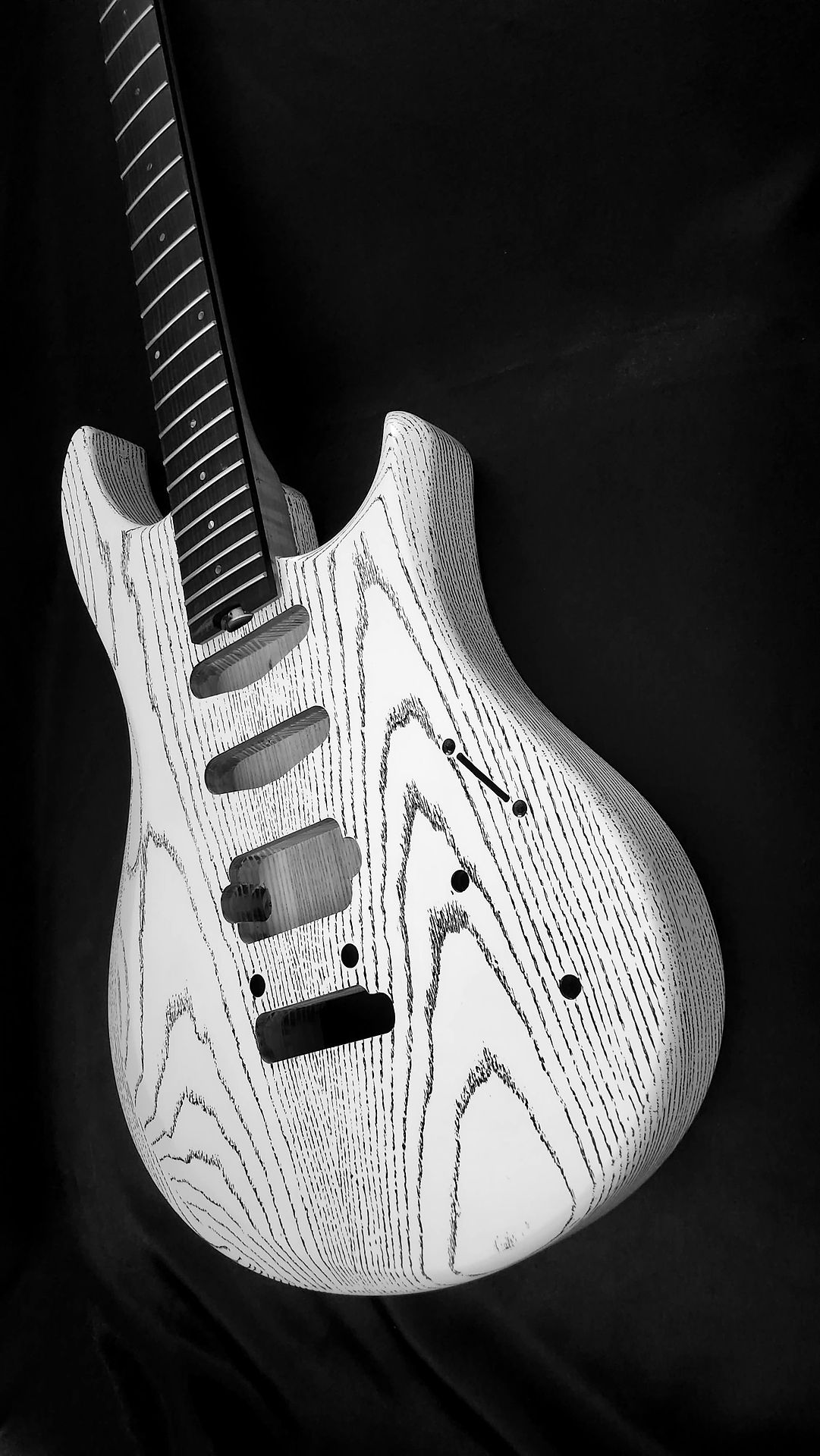
GUITAR FINISH
What we are offer?
We offer a range of expertly applied finishes that not only protect your instrument but also enhance aesthetic, and character. Each finish is carefully selected to match the player’s needs and the guitar’s unique personality.
Every guitar finish is a testament to our dedication to craftsmanship and tone. We offer a range of meticulously applied finishes—from classic nitrocellulose lacquer to modern polyurethane—each designed to gain the natural beauty while preserving resonance and durability.
Whether you prefer a vintage-inspired relic look or a sleek high-gloss shine, our finishing process balances aesthetics with acoustic integrity, ensuring your instrument both looks and sounds exceptional. Each finish is hand-applied with care, bringing out the unique character of every guitar we build.
Technical Overview
We apply each finish with attention to both tonal integrity and long-term performance. Our finish options are selected to complement the specific of wood, intended use, and desired aesthetic of your instrument.
Polyurethane
Polyurethane is a catalyzed synthetic polymer finish that forms a hard, high-build protective layer. It cures to a rigid film with excellent abrasion resistance, chemical stability, and environmental sealing. Due to its high solids content and fast curing properties, polyurethane is ideal for players requiring maximum durability in varying humidity and temperature conditions.
Nitrocellulose
Nitrocellulose lacquer is a solvent-based, cellulose-derived finish that has been standard in fine instrument building since the early 20th century. Unlike catalyzed finishes, nitrocellulose cures through solvent evaporation, resulting in a much thinner and more acoustically transparent film. It continues to outgas and harden over time, slowly integrating with the instrument’s movement and wear.
Food-Grade Oil Finish
Our food-grade oil finish is composed of natural oils with non-toxic hardeners. This type of finish penetrates directly into the wood grain, rather than forming a film on top, resulting in a tactile, raw feel and uninhibited acoustic performance.
Top Lacquer Finish
The sheen level of a guitar finish refers to the amount of light reflectivity or surface gloss, typically measured in Gloss Units (GU) using a gloss meter at a 60° angle. At Markland Guitarworks, we offer finishes in maximum sheen levels to suit both functional and aesthetic preferences:
Specifications
Hi-Gloss (90+ GU)
A high-sheen finish that produces a mirror-like surface, achieved through multi-layer clear coating and fine polishing. Hi-gloss enhances visual depth and color saturation, especially on figured tonewoods. It requires precise leveling and buffing to maintain optical clarity and surface uniformity. While visually striking, hi-gloss is more prone to showing fingerprints and micro-abrasions.
Lo-Gloss (30–60 GU)
Also known as semi-gloss, this finish strikes a balance between reflectivity and subtlety. It provides a softer visual appearance than hi-gloss while retaining some luster. Lo-gloss finishes are often chosen to reduce glare under stage lighting while still showcasing the wood grain. The surface is less polished, resulting in a finer matte texture that still resists minor handling marks.
Satin (10–30 GU)
A low-sheen or matte finish with minimal reflectivity, achieved by using flattening agents in the final coat or by controlled surface abrasion. Satin finishes offer a smooth, non-glossy texture that provides excellent tactile response, particularly on necks, where players value low friction and a "fast" feel. Satin is functionally resistant to smudging and glare but may show polishing over time in contact areas.
Finding the Right Guitar Finish for You
We believe that the ideal guitar finish isn’t one-size-fits-all—it’s the one that best reflects your style, sound, and playing needs. Whether you lean toward a classic gloss, a modern satin, or a raw, open-pore look, each finish brings its own character to the instrument. From tone shaping to durability and visual appeal, finishes matter more than many players realize. Instead of chasing the “perfect” finish, we encourage you to think about what fits your playing habits and aesthetic preferences. Your guitar should feel like an extension of you—finish included.